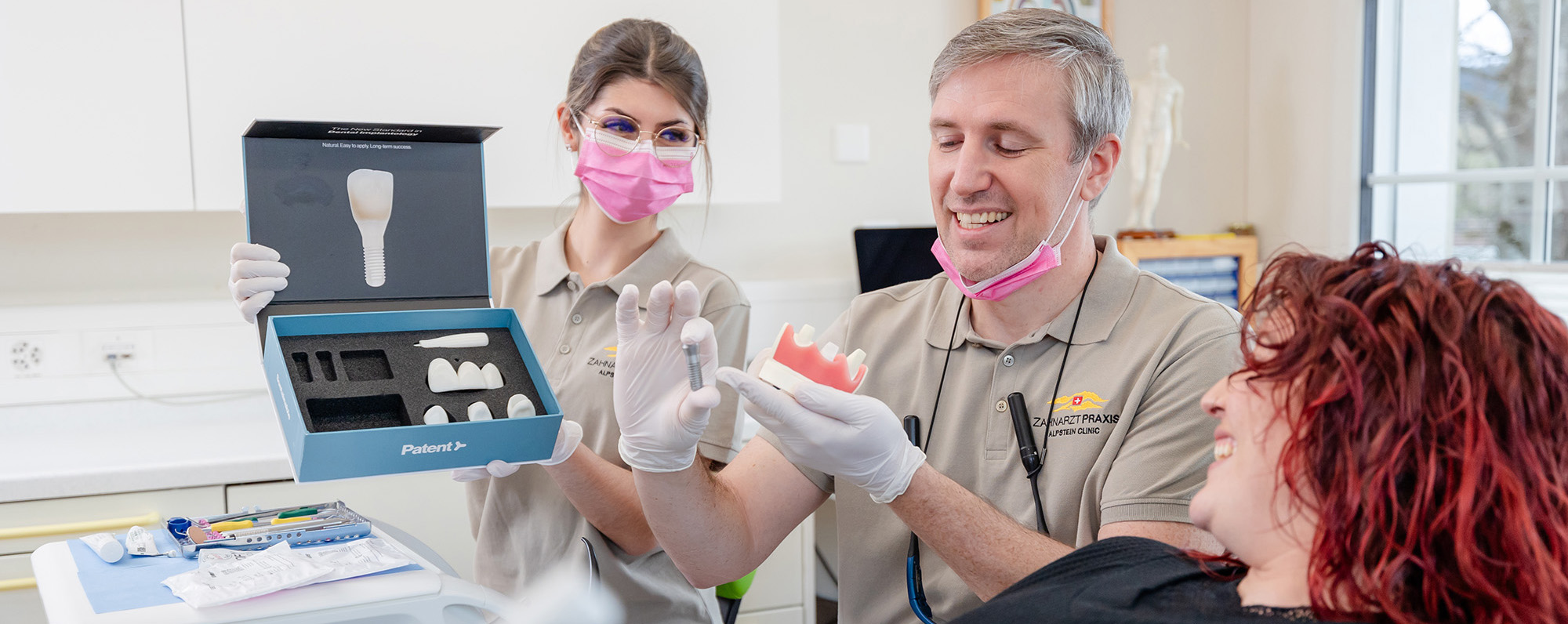Aesthetic dentistry

Metal-free dentures
Metal-free dentures – Biological dentures
Metal-free – well tolerated, biocompatible and highly aesthetic
Foreign materials enter the human organism through dental fillings, bridges or implants. Depending on the patient’s sensitivity and state of health, this can lead to irritation and interactions. This makes the careful selection of dental materials all the more important. At Alpenpraxis Isarwinkel, we prefer to use metal-free materials such as ceramic implants, as they trigger fewer intolerance reactions.
Metal load from the dental prosthesis
Metals can trigger allergies
and be toxic
Metal quantities “The dose makes the poison!”
State-of-the-art analysis method –
the multi-element analysis
Multi-element analysis measures numerous metals very sensitively and simultaneously from a small saliva sample. The test determines the concentration of up to 24 metals in the saliva.
The result reflects the metal load of your saliva.
Numerous metals are measured in the multi-element analysis:
- PMMA-free plastics
- veneers
- dental crowns
- dental bridges
MMA-free resin filling
Composite resin fillings are a state-of-the-art technology. After the caries has been removed, plastic that matches the color of the natural teeth is applied in layers to the gently roughened tooth.
Special adhesives are applied beforehand, which create a bond between the tooth and the resin at a molecular level. Each layer is hardened with a special light. This causes the plastic to bond firmly with the roughened tooth surface. In this way, the color and shape of defective teeth are faithfully reproduced and the radiant smile returns. With the right indication and application, dental resins are of optimum quality and have a medium-term durability.
Why MMA free dental resins?
The plastic molecule MMA is very allergenic and is contained in many products. As MMA comes out of the acrylics in the mouth under constant acidic load when exposed to moisture and constant warm temperatures and is swallowed, we use MMA-free filling materials such as those from Saremco.
Our motto: It should be ensured that dental resins not only look good and last well, but that they are also well tolerated. Questions about toxicology, biocompatibility and compatibility, which have to be implemented in everyday practice, are therefore attracting increasing interest.
Veneers
The ceramic material used is chemically inert, i.e. it does not dissolve in the mouth and is therefore biologically compatible. Veneers can be used to correct slight misalignments, gaps between teeth, tooth colors and local discolorations. They are therefore usually applied to the front teeth. As virtually nothing needs to be removed from the tooth when using them, veneers are rightly considered to be one of the gentlest minimally invasive procedures.
Dental crowns
The crown is usually made of an all-ceramic material. Crowns are usually used to repair teeth that are broken, worn or have large fillings. They can also be used to secure a dental bridge, cover a dental implant or protect a weak tooth from breaking off. Crowns are custom-made for the tooth and permanently bonded to the tooth.
Inlays and Onlays
The great advantage of inlays and onlays over plastic fillings lies in the material and the manufacturing process. Dental fillings are inserted into the mouth in a workable state and hardened there. This causes the material to shrink, which can lead to irritating food residues between the teeth and thus to secondary diseases.
Inlays and onlays are specially produced for you under idealized conditions. This enables an exact fit and a long service life for the restoration.
Dental bridges
Using all-ceramic materials, it can be designed to blend in completely unobtrusively with the natural dentition.